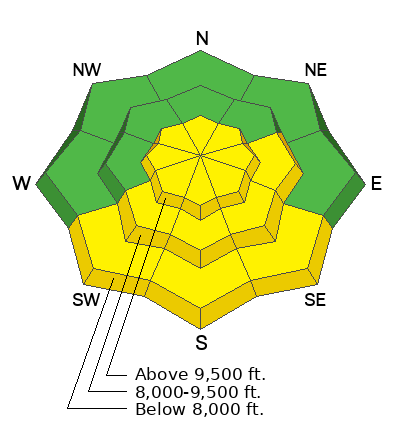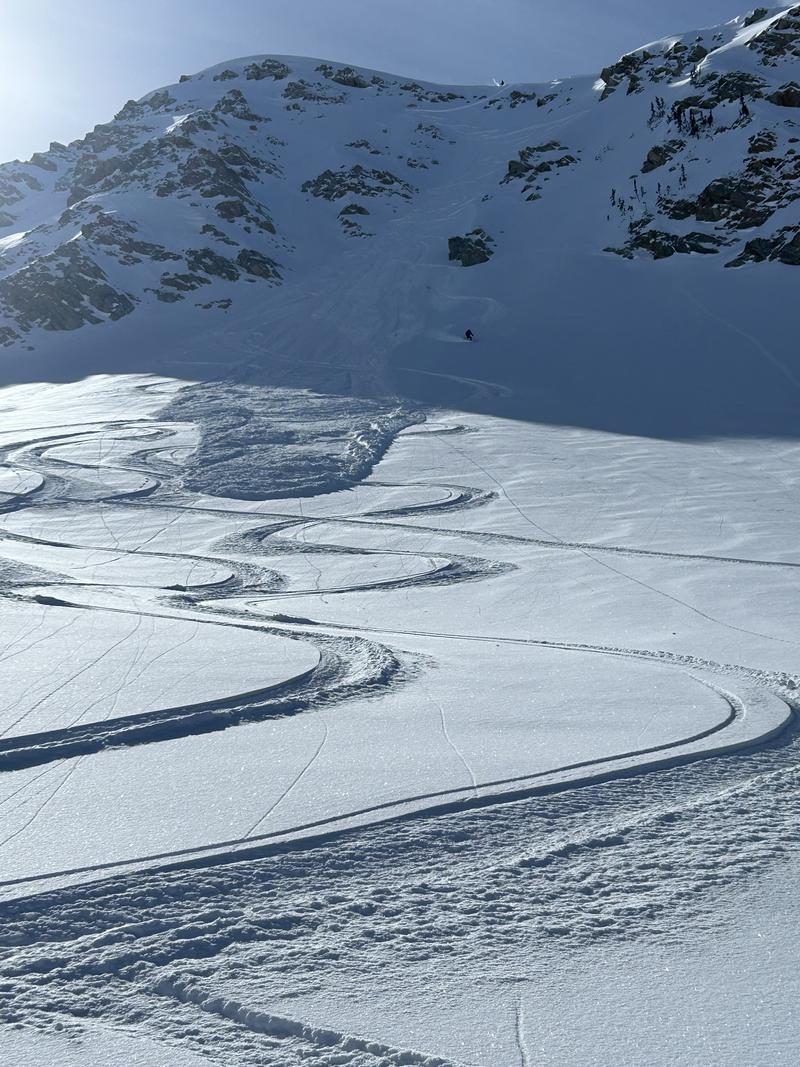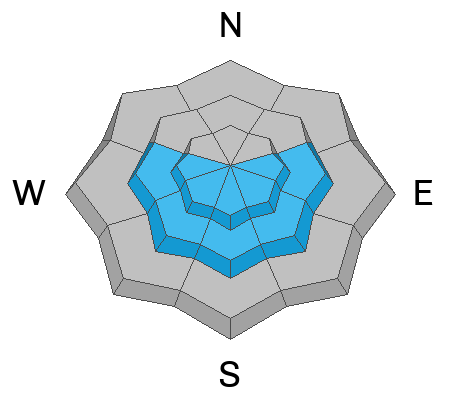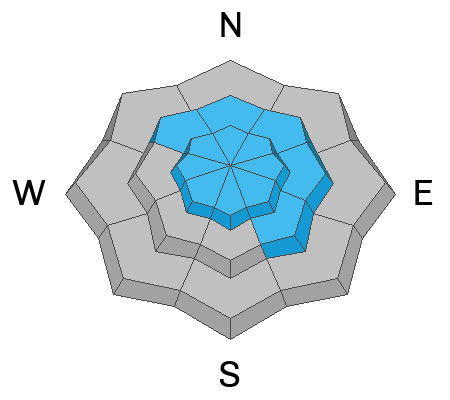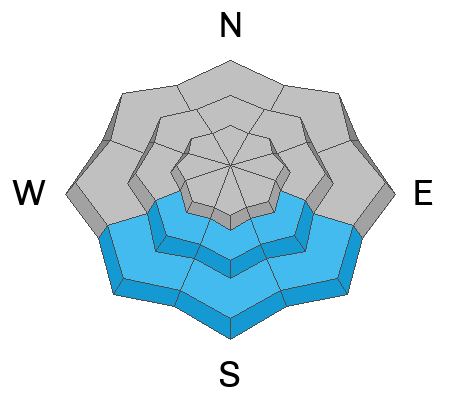This morning, under clear skies there is a temperature inversion in the mountains, with trailhead temperatures in mid-teens F, and ridgetop temperatures in the mid-20 F. The westerly winds have begun to pick up overnight, averaging 10-15 mph with gusts up to 30 mph at mid-elevations, and gusts near 50 mph at 11,000 feet.
Today will be another day of strong sunshine, with temperatures warming into the upper 30s F at upper elevations and the mid-40s F at low and mid-elevations. Winds will remain from the west-southwest and continue to increase throughout the day, averaging 15-20 mph and gusting up to 30 at mid-elevations, with gusts near 50 mph at 11,000 feet.
Outlook: On Monday, strong winds will start blowing as a new storm system approaches. This storm will be colder than recent ones and will bring heavy snow starting on Monday. The snow levels will stay high, and the snow will be wet due to the direction of the wind. By early Tuesday, the storm front will pass through, bringing strong winds, heavy snow, and a quick drop in temperature. There might even be lightning near the front. Snow will continue on Tuesday, gradually easing off by Tuesday night, as the wind shifts to the northwest. This next storm could bring 15-25 inches of snow to the Central Cottonwoods.
Riding conditions remain excellent in the backcountry, although solar slopes may now have developed a firm crust this morning due to days of strong sun.
Avalanche activity yesterday included long-running dry-loose avalanches within the ski resorts and backcountry, as well as some smaller slab avalanches of wind-drifted or new snow that could have failed on the 2/14 facets, though these observations were from a distance, so this is not confirmed. On Red Baldy, one rider was caught and carried in a large dry-loose avalanche that broke approximately 6" deep at it's deepest. See photo below.
Red Baldy avalanche - find detailed report HERE.
On Thursday evening,
a very large avalanche occurred on Miller Hill in American Fork Canyon. One or two people were likely caught in the avalanche. However, they were gone when the second group arrived and conducted a beacon search to ensure no one was buried. Mark Staples visited the avalanche Friday; it was approximately 1,500 feet wide and 2 feet deep, and it broke on a layer of faceted snow above a crust.

